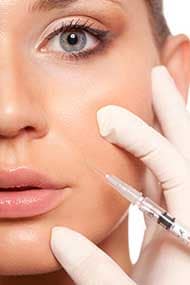The “Vampire Facelift” is a non-surgical soft-tissue augmentation technique. It is one of the non surgical procedures used to smooth wrinkles and remove fine lines. The “Vampire Facelift” does not use common dermal fillers, but instead stimulates new growth of the patient’s own collagen.

What is PRP?
Platelets are vital to healing. They are the first cells to respond to a wound site. They are very rich in growth factors, and hormones which stimulate the generation of healing tissue.
Many surgical and non surgical procedures use PRP to regenerate tissues. For instance, PRP is used in cardiovascular surgery to reduce leakage from sutured blood vessels, and promote rapid healing of incisions. PRP is also used to enhance bone regeneration in fractures, by stimulating the generation of new bone. PRP is adhesive in nature, combining easily with bone and skin. It may even become part of future implant surgery, if used as a coating material.
Extracting the Platelets
Roughly two teaspoons of blood are drawn from the patient and centrifuged to concentrate and isolate the platelets. A platelet-rich liquid is extracted, and this liquid is combined with thrombin and calcium chloride, to form the PRP gel. PRP gel contains high concentrations of platelets and fibrinogen. Fibrinogen converts to fibrin, and forms a “mesh” over a wound site.
The preparation of PRP takes about 30 minutes.
Why We Need Collagen
The protein collagen is a fibrous connective tissue essential for the appearance of youthful skin. Degradation of collagen is what causes skin to loose firmness, sag, and develop wrinkles. This is a consequence of aging, because less collagen is produced in the body over time.
Skin, especially facial skin, gets elasticity and strength from the tensile strength of collagen. So stimulating the production of collagen improves the appearance of skin. And PRP can stimulate collagen. The platelets in the PRP release alpha granules in the injection site. These alpha granules contain a cocktail of growth factors, promoting proliferation and the differentiation of cells. The alpha granules also produce collagen, which restores the structure of the skin.
Tricking Your Own Body
At its core, the Vampire Facelift is a process by which you are using parts from your own body (the PRP) to trick other parts of your own body to respond to something that isn’t really happening. Basically, the growth factors are injected into the site in your face, and these growth factors activate stem cells that are already in there.
Once the PRP is injected, these stem cells are tricked into thinking there has been an injury and new collagen, blood vessels and fatty tissue should be created to make the repairs. Of course, there never really was an injury, but that’s the whole point of the trick!
Not Just Any “Vampire”
Practitioners need an extensive knowledge of facial anatomy and physiology to perform the Vampire Facelift technique. Keep in mind that the substance being injected into your face is designed to initiate a specific physiological reaction, so the right amount, in the right spot and in the right way is incredibly important. It is your own blood and it won’t be toxic to your body, but it also won’t have nearly the results you want if it is done correctly. Shop around for a qualified practitioner with proven results before you commit.
PRFM Treatment
There is also a Platelet-rich fibrin matrix treatment, developed by Selphyl. This is similar to the “Vampire Facelift” in technique, but not gel composition. There’s more fibrin, which helps localize the vital growth factors more precisely. PRFM stimulates the production of collagen as PRP does, but the release of the alpha particles is sustained, and collagen fibers mature for longer.
